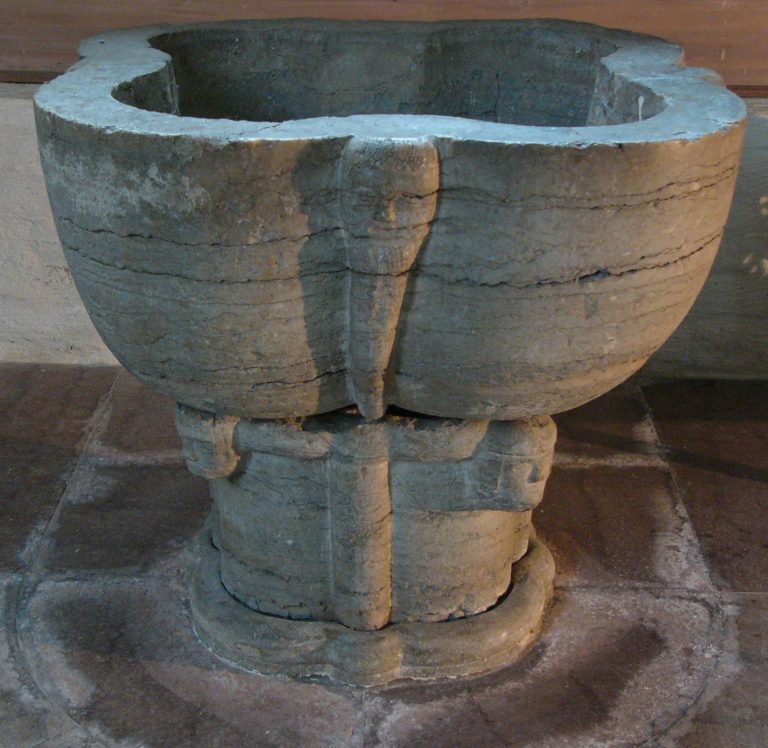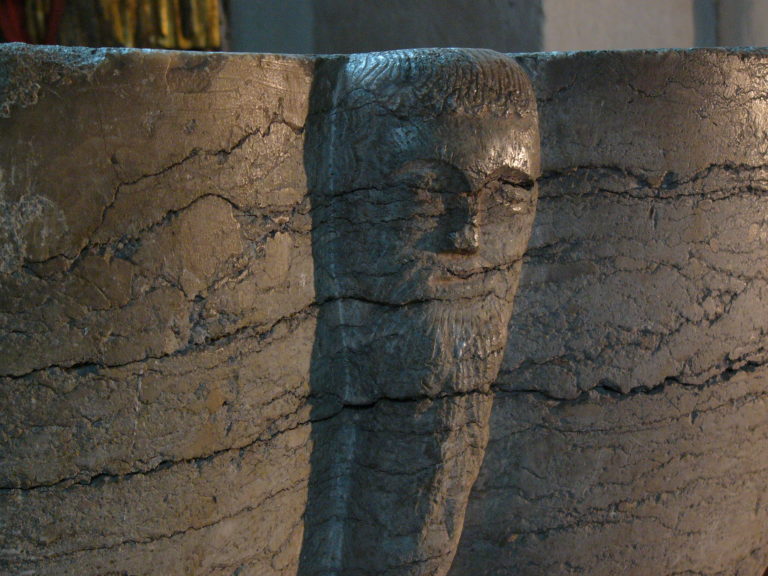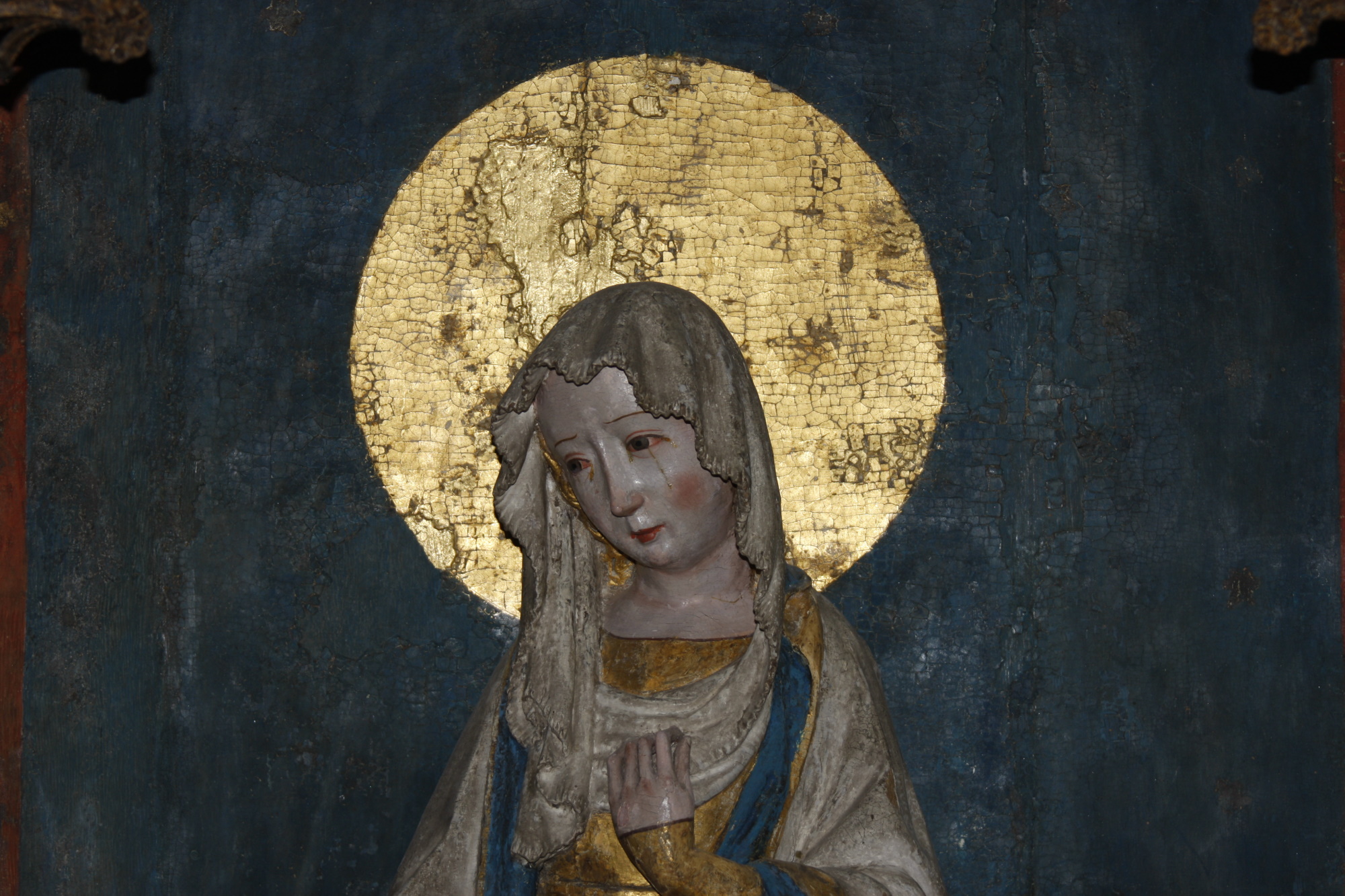During the years of servicing, the baptismal font was placed far to the west, directly inside of the portal to the congregational church. The baptismal font was one of the first objects the medieval congregation encountered as they stepped into the church room. Today the baptismal font is placed by the chancel.


The baptism was the first Christian activity for any human being. By being baptised, the child was brought into the Christian congregation. This explains why the baptismal font was placed near the portal; as a reminder each time someone walked by. Another, more superstitious conception, was that the unbaptised child was considered to be pagan and thus controlled by evil forces. Pagans were not allowed to walk further into the Holy Church room than was necessary.
The baptism was, and still is, a sacred act and a sacrament. This is why the baptismal font is one of a church’s most valuable inventories. During the missionary times the first Christians were baptised by being submerged into a fountain, a lake, or a barrel. When all adults had been baptised, it was time to baptise the children. The children were also submerged into the water, but the bin for baptising did not have to be so large. This resulted in the production of baptismal fonts started during the 12th century. In Östergötland, there are about seventy medieval fonts. The fonts are artistically manufactured and were traditionally carved in limestone or sandstone, however, granite and marble was also used. The fonts often had a shape of a big chalice with a foot, shaft, and cuppa.
The large cuppa was filled with water a couple of times each year during prayers. Before a baptise, the Holy water was heated by placing hot stones in the cuppa. In between baptising ceremonies, the Holy water was protected with a cover.
A newly born child was to be saved as soon as possible from the evil spirits by baptism, which was not only an act of submersion. Also, conjurations were read during the baptismal act, so that the Devil would leave the child alone. The child would taste a few grains of salt symbolizing wisdom; it was anointed in an essential oil, chrism, which would remind of Jesus Christ, “the anointed one.” During Late Middle Ages, it became more common to only wet the child’s head with water, and thus the fonts were put away and replaced by a new smaller cuppa.
The Askeby font is from the mid-13th century. It may have been imported as semi-manufactured in grey limestone from Gotland, and then a stone master in Östergötland finished the carving. Baptismal fonts that are older than this one usually have a hole in the bottom of the cuppa, so that the Holy water could be poured out through the floor within the consecrated walls of the church. This sort of hole cannot be found in the Askeby font. One may assume that the baptismal water in this case was poured into an inner copper pot of the same shape and size as the cuppa. When it was time to refill the baptismal water, the pot could be lifted up and emptied. This was done either in the churchyard or through a drain hole in the wall, the so called piscina.
The baptismal font is shaped like a four-leaf clover, called a four-mark. Both the cuppa and the shaft that the cuppa rests upon are decorated with four human heads having different looks. Some of the heads are damaged, but on one of them you can see the work of the stone-cutter, carefully forming of the man’s hair and beard. Such heads are often to be seen on medieval baptismal fonts. They could symbolize either the four rivers, which runs out from Paradise onto the Earth in four directions, or the Four Evangelists who are preaching the gospel to each and every corner of the world.
The font has probably been painted, but there are no traces of this. In 1693, the baptismal font was replaced by a smaller font in brass. The large font in stone was disposed of and was exposed to rough handling. At the time of the church being restored in 1877, there is a note about the old font made of stone: “… had indeed been brought out from its dark hiding place with other garbage, but is broken into several pieces and thrown outside of the ring wall.” At the restoration in 1951, the medieval baptismal font was placed in its current position by the chancel and is being used again, but with a smaller bowl.
SG
